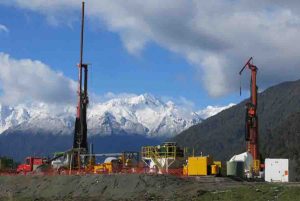
Analysis of natural sparkling mineral water has given scientists valuable clues on how to locate hot water springs — potential sources of sustainable, clean energy.
Studies at naturally carbonated springs have shown how oxygen in the water comes to have a distinctive chemical fingerprint.
Research showed that this fingerprint is influenced by the presence of carbon dioxide gas — and not by heat from below Earth’s surface, as was previously thought.
The finding may help scientists narrow their search for sites where geothermal energy — heat generated and stored in Earth — could be sustainably recovered.
Scientists from the University of Edinburgh analysed water from naturally carbonated springs in Daylesford, Australia, and Pah Tempe in Utah, US.
The team used computers to model the interactions between the water and surrounding rocks, based on measurements of water samples from the sites. Their findings eliminated the possibility that minerals from the rocks affected the oxygen in the water. Instead, they showed that CO2 gas must be influencing the oxygen’s composition.
The study, published in Applied Geochemistry, was supported by the UK Engineering and Physical Sciences Research Council and the Australian research organisation CO2CRC.
R?ta Karolyt?, of the School of GeoSciences, who led the study, said: “The oxygen fingerprint of spring waters has long been used to estimate the depth of the water’s source. Our new finding, that the mixing of natural CO2 with water changes its oxygen fingerprint, means that many sparkling spring waters previously thought to be originating from very deep in Earth’s crust actually only have this fingerprint because of mixing with CO2.”
Dr Stuart Gilfillan, of the School of GeoSciences, who co-ordinated the study, said “This finding changes how we can use the oxygen fingerprints of natural spring waters to identify potential geothermal resources. Estimates of how much heat a sparkling water spring has been exposed to should take into account the effect of CO2.”
Reference:
Rūta Karolytė, Sascha Serno, Gareth Johnson, Stuart M.V. Gilfillan. The influence of oxygen isotope exchange between CO 2 and H 2 O in natural CO 2 -rich spring waters: Implications for geothermometry. Applied Geochemistry, 2017; 84: 173 DOI: 10.1016/j.apgeochem.2017.06.012
Note: The above post is reprinted from materials provided by University of Edinburgh.










